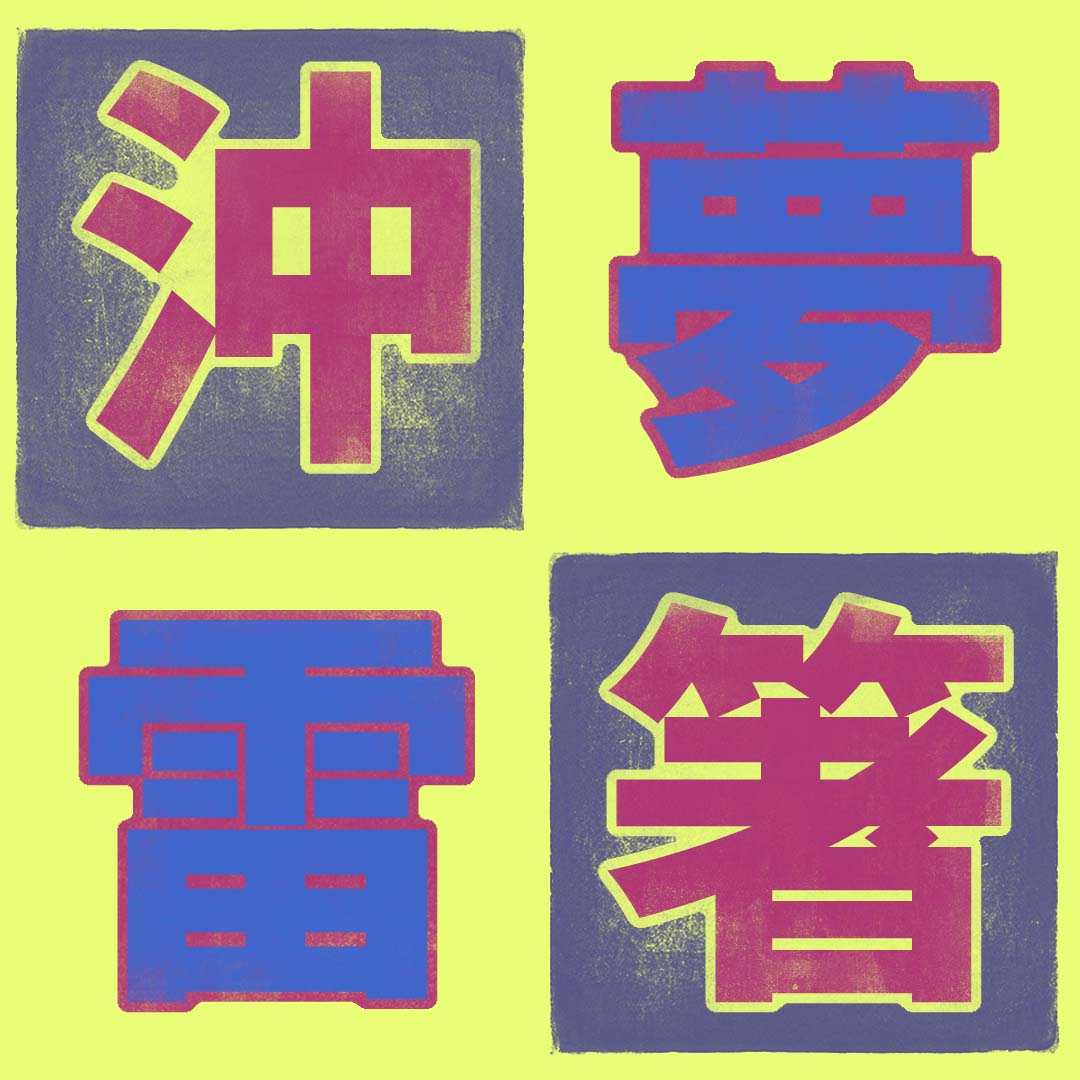
沖
offshore
JOK: 1583
This kanji brings us into fascinating realms, including an island so sacred that women are forbidden to enter, offshore earthquakes that cause tsunamis, and World War II battles that the Japanese still analyze for their lessons about failure. Above all, studying 沖 takes us to Okinawa, whose distinctive culture bears the influences of surrounding nations. As such, it is the birthplace of karate!
夢
dream
JOK: 1844
Find out how to talk about sweet dreams, nightmares, and the daydreams you have while studying kanji. Learn to say, "I sacrificed the present moment for the future," "My dream finally came true," and "Never did I dream that ...," as well as "I'm crazy for kanji"! See how the Japanese neutralize inauspicious dreams and which part of a Tokyo temple was built as the result of a sleep dream.
雷
thunder
JOK: 1888
See how people have envisioned thunder as a god's drum or hammer. Discover how to use 雷 for applause, amazement, and explosive weapons. Learn to say, "Thunder indicates that a storm is near," "The sound of thunder comes after the flash of lightning," "Thunderclouds hung low over the whole valley," and "Tactless people are likely to step on other people's land mines."
箸
chopsticks
JOK: 2094
Learn how chopsticks can rest and bathe—and what “pregnant chopsticks” signify. See how 箸 can serve as a stand-in for “eating.” If a human uses one end of chopsticks, find out who eats from the other end. Discover dozens of chopstick taboos, and see which ones remind people of funerals. Find out about the おてもと on chopstick wrappers, and learn why the Chinese dropped 箸.
Kanshudo is your AI Japanese tutor, and your constant companion on the road to mastery of the Japanese language.
To get started learning Japanese, just follow the study recommendations on your Dashboard.
You can use Quick search (accessible using the icon at the top of every page) to look up any Japanese word, kanji or grammar point, as well as to find anything on Kanshudo quickly.
For an overview, take the tour.

